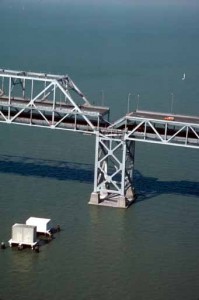Unless Congress acts and passes a long-term surface transportation bill on or before May 31st when federal funding expires, the future of America’s road, rail and bridge (transportation) infrastructure will be in doubt. This is a key message of the American Public Transportation Association (APTA) in its Apr. 7, 2015 “‘Stand Up for Transportation Day’ Galvanizes Support for Federal Transportation Funding Before It Expires on May 31,” press release. The APTA on Apr. 9, 2015 will be joined by a host of others in rallying support for U.S. transportation with the launching of the “Stand Up for Transportation Day” cause.
“At local events across the country, ‘Stand Up for Transportation Day’ will unite the voices of hundreds of organizations, along with local, state and federal elected officials, business and transportation leaders, public transit advocates, and transit riders,” the APTA emphasized. “They will collectively call on Congress to take action and pass a long-term surface transportation bill before federal funding expires on May 31.”
The APTA succinctly sums the situation up as follows:

“For the last decade, Congress has passed one short-term solution after another. Without a long-term federal transportation funding bill, Americans across the country will face tremendous uncertainty, and public transportation systems with infrastructure in desperate need of repair will once again resort to temporary solutions.”
Nothing complicated whatsoever about this whole premise.
“A long-term transportation bill is urgently needed to help our local and national economies grow and to provide crucial funding for public transportation infrastructure,” the APTA further noted.
The transportation association goes on in the release to list a number of public transportation agencies taking part, highlighting what their participatory roles (activities/events) will involve.
Activities far and wide, from Long Beach (CA) and Denver (CO) to Tampa (FL), Lansing (MI) and Albany (NY) and more to take place.
In 2014, 10.8 billion trips were taken on public transit. That’s 100 million more than in the year before. What is one key beneficial effect of riding public transit? From transportation, there is a reduction in the amount of pollutants emitted into the air. How much depends on what extent environmentally friendly public transit is used. Nothing too terribly complicated about that either.
For much more information, see: “Stand Up 4 Transportation” here.
Image above: C. E. Meyer, U.S. Geological Survey
Published by Alan Kandel